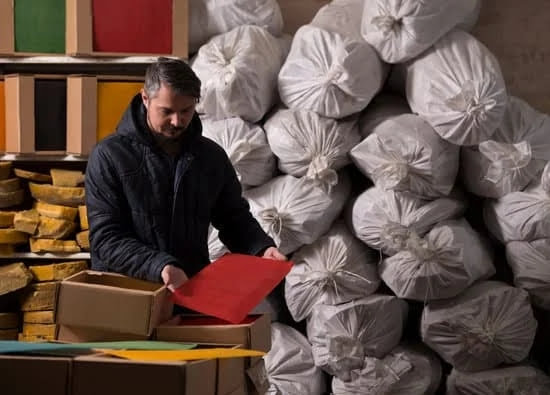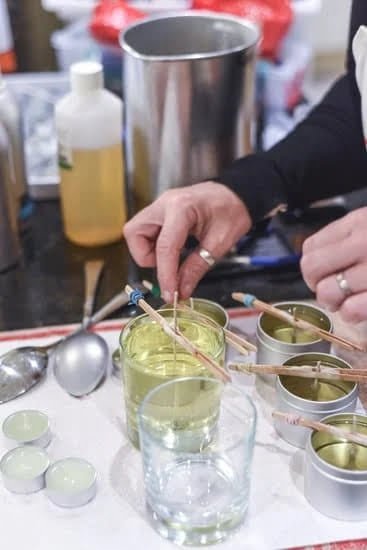Candle making has a long history deeply rooted in various religious practices around the world. From creating personalized candles for prayer and meditation to crafting intricate designs for ceremonial rituals, the art of religious candle making holds a special place in many cultures. This article aims to delve into the spiritual significance of religious candle making, exploring its history, traditions, and techniques.
Throughout history, candles have played a significant role in religious ceremonies and personal devotions. The act of crafting candles for religious purposes carries a deep symbolism and spiritual importance for many people. Whether it’s creating candles as offerings to deities or using them as tools for meditation, the process of making religious candles is a sacred tradition that dates back centuries.
In this article, we will explore the history and significance of religious candle making, shedding light on the various inspirations behind different candle designs. We will also provide a step-by-step guide to making your own religious candles at home, as well as highlight the importance of candle making in different religious practices.
Additionally, we will take a look at various religious candle making traditions from around the globe, offering insight into how different cultures approach this spiritual art form.
The History and Significance of Religious Candle Making
The art of religious candle making holds a significant place in various cultural and religious traditions around the world. From Christianity to Buddhism, candles have been used in spiritual practices for centuries. The act of making these candles is considered a sacred and meditative process, often involving symbolism and devotion.
One of the main reasons for the significance of religious candle making is its historical roots. In ancient times, before the invention of electricity, candles were the primary source of light. Many religious ceremonies and rituals required the use of candles, making them an essential part of worship. As a result, the craft of candle making became intertwined with spirituality and religion.
Today, religious candle making continues to be an important practice in many cultures. It is not only a way to create functional items for religious rituals but also a form of artistic expression. The process of making religious candles often involves intricate designs, colors, and scents that hold symbolic meaning within specific religious contexts. These candles are used as offerings, blessings, and as aids for meditation or prayer.
In addition to its historical and symbolic significance, religious candle making serves as a way to bring communities together in shared spiritual practice. In many cultures, the act of making candles is done collectively by members of a community or congregation. This communal activity fosters a sense of unity and connectedness among participants and reinforces the spiritual significance of the practice.
| Religious Candle Making | Significance |
|---|---|
| Historical roots | Cultural and spiritual traditions |
| Symbolic meaning | Community unity |
Finding Inspiration for Religious Candle Designs
When it comes to creating religious candles, finding inspiration for the designs is an essential step in producing meaningful and beautiful candles. Whether you are making candles for personal use or for a religious candle making place in your community, drawing inspiration from various sources can help you create unique and significant designs.
To find inspiration for religious candle designs, consider the symbols and imagery that hold significance within the specific religious tradition. For example, in Christianity, the cross, images of saints, and biblical scenes are commonly used in religious candles. In Hinduism, the Om symbol or images of deities can be central to candle designs. Researching the specific religious symbols and their meanings can provide a wealth of inspiration for your candle making endeavors.
Another source of inspiration for religious candle designs can come from nature and natural elements. Many religious traditions incorporate nature into their spiritual practices, so using natural materials such as flowers, leaves, or even incorporating earthy scents into the candles can add a deeper layer of meaning to the design.
Finding Inspiration for Religious Candle Designs
- Researching symbols and imagery within specific religious traditions
- Exploring nature and natural elements as sources of inspiration
- Studying traditional art and crafts of different cultures to inform candle designs
Materials and Tools Needed for Religious Candle Making
Religious candle making is a spiritual and decorative art that requires specific materials and tools to achieve beautiful and meaningful creations. Whether you are making candles for personal use or for religious ceremonies, having the right supplies is essential. Here are the materials and tools needed for religious candle making:
1. Wax: The most important material for candle making is the wax. There are various types of wax to choose from, including paraffin, soy, beeswax, and palm wax. Each type of wax has its own unique qualities and benefits.
2. Wicks: Wicks are essential for creating the flame in a candle. When choosing wicks for religious candle making, it’s important to consider the size of the candle and the burning time required.
3. Fragrance Oils (optional): If you want to add a pleasant scent to your religious candles, fragrance oils can be used. Popular scents include frankincense, myrrh, sandalwood, or floral fragrances depending on the purpose of the candle.
4. Dyes (optional): To create colorful and vibrant religious candles, dyes can be added to the melted wax. Traditional religious colors such as white, red, green, blue hold different meanings according to specific practices.
5. Molds: Molds come in various shapes and sizes to create different designs of religious candles. Common mold shapes include pillars, votives, tapers or specialty molds featuring sacred symbols or figures associated with specific religions.
6. Double Boiler or Melting Pot: A double boiler or melting pot is necessary for melting the wax without burning it. It’s important to have a dedicated pot specifically for candle making.
7. Thermometer: A thermometer is needed to monitor the temperature of the melted wax because each type of wax has an optimal pouring temperature range.
Having these basic materials and tools readily available will enable you to get started on your own religious candle making journey inspired by traditional customs and beliefs found at any religious candle making place in your area.
Importance of Candle Making in Various Religious Practices
Candle making has been a significant aspect of various religious practices for centuries, playing an important role in rituals, ceremonies, and spiritual expression. Throughout history, candles have symbolized different aspects of faith and have been used to signify hope, purity, and the presence of the divine. This section will explore the significance and importance of candle making in various religious practices around the world.
Symbolism and Spiritual Significance
In many religious traditions, candles hold a symbolic meaning that goes beyond their practical use as a light source. The act of lighting a candle is often seen as a sacred ritual that represents enlightenment, prayer, or remembrance. For example, in Christianity, candles are often lit to symbolize Christ as the light of the world.
Similarly, in Hinduism and Buddhism, lighting a candle can signify enlightenment and inner peace. Understanding the symbolism behind candle making adds depth to its importance in religious practices.
Rituals and Ceremonies
Candle making is integral to various religious rituals and ceremonies. In Judaism, for example, the Sabbath is welcomed by lighting candles before sunset on Friday evening. In Catholicism, candles are often used during Mass or lit as part of prayers for intentions or offerings. Additionally, in some indigenous traditions, candles are used during healing ceremonies or to honor ancestors. The practice of creating these sacred candles adds an extra layer of significance to their use in religious observances.
Sustaining Tradition
The act of making religious candles also serves to sustain tradition within different faith communities. Whether it’s crafting beeswax tapers or intricately designed votive candles, the art of candle making connects individuals to their cultural heritage and spiritual beliefs. By engaging in this practice, individuals uphold customs that have been passed down through generations and contribute to the continuity of their religious traditions.
The importance of candle making in various religious practices goes beyond simply producing a source of light; it is deeply intertwined with spirituality, symbolism, ritualistic observances, and cultural heritage. The next time you visit a religious candle making place in your area or abroad make sure to appreciate not only the physical craftsmanship but also the spiritual significance behind each handcrafted candle.
Exploring Different Religious Candle Making Traditions Around the World
Religious candle making has been an integral part of various religious traditions around the world. Different cultures have distinct ways of incorporating candles into their spiritual practices, often using them as a means of prayer, meditation, and worship. This section will explore some of the diverse religious candle making traditions found across different countries and cultures.
Christianity
In Christian tradition, candles hold significant symbolism and are often used in churches and during religious ceremonies. The lighting of candles is seen as a way to symbolize the presence of God and to offer prayers. In certain Catholic traditions, intricate designs and symbols are incorporated into the making of religious candles, such as images of saints or biblical scenes.
Hinduism
In Hinduism, the use of oil lamps and candles holds a sacred significance. During festivals and religious ceremonies, colorful candles and diyas (oil lamps) are lit to ward off darkness and evil spirits while inviting positive energy into homes and temples. The process of making these candles involves using vibrant colors and fragrances, with each representing different aspects of spirituality.
Buddhism
Buddhist candle making traditions also emphasize the use of candles as offerings during prayer and meditation. The act of lighting a candle is a symbolic gesture to illuminate one’s path towards enlightenment. Traditionally made from natural materials such as beeswax or vegetable oils, Buddhist candles are often placed on altars to honor Buddha and his teachings.
The diversity in religious candle making traditions around the world showcases the universal practice of using candles as a tool for spiritual connection and reverence across different faiths.
Bringing the Spiritual Experience of Candle Making Home
In conclusion, the art of religious candle making holds a special place in the hearts of many individuals around the world. From its historical significance to its importance in various religious practices, the act of creating these candles is deeply rooted in spirituality and tradition. For those seeking to bring this spiritual experience into their own homes, there are a few key tips that can help beginners embark on their candle-making journey.
First and foremost, it’s important for beginners to take the time to understand the history and significance of religious candle making. By learning about the traditions and customs associated with this practice, individuals can gain a deeper appreciation for the art form and its impact on different cultures. Additionally, finding inspiration for religious candle designs can be a meaningful way to connect with one’s spiritual beliefs while engaging in the creative process.
Furthermore, beginners should familiarize themselves with the materials and tools needed for religious candle making. From choosing the right wax to selecting fragrances and dyes, each component plays a crucial role in creating candles that hold personal or religious significance. Lastly, visiting a specific religious candle making place can provide valuable insight and hands-on experience for those looking to further immerse themselves in this sacred craft.
Whether it’s observing traditional techniques or participating in workshops, such visits can deepen one’s understanding of religious candle making and enhance their skills as a practitioner. Ultimately, by incorporating these tips into their candle-making practice, beginners can honor the spiritual essence of this art form and create meaningful pieces that hold personal or religious significance.

Welcome to my candle making blog! In this blog, I will be sharing my tips and tricks for making candles. I will also be sharing some of my favorite recipes.





